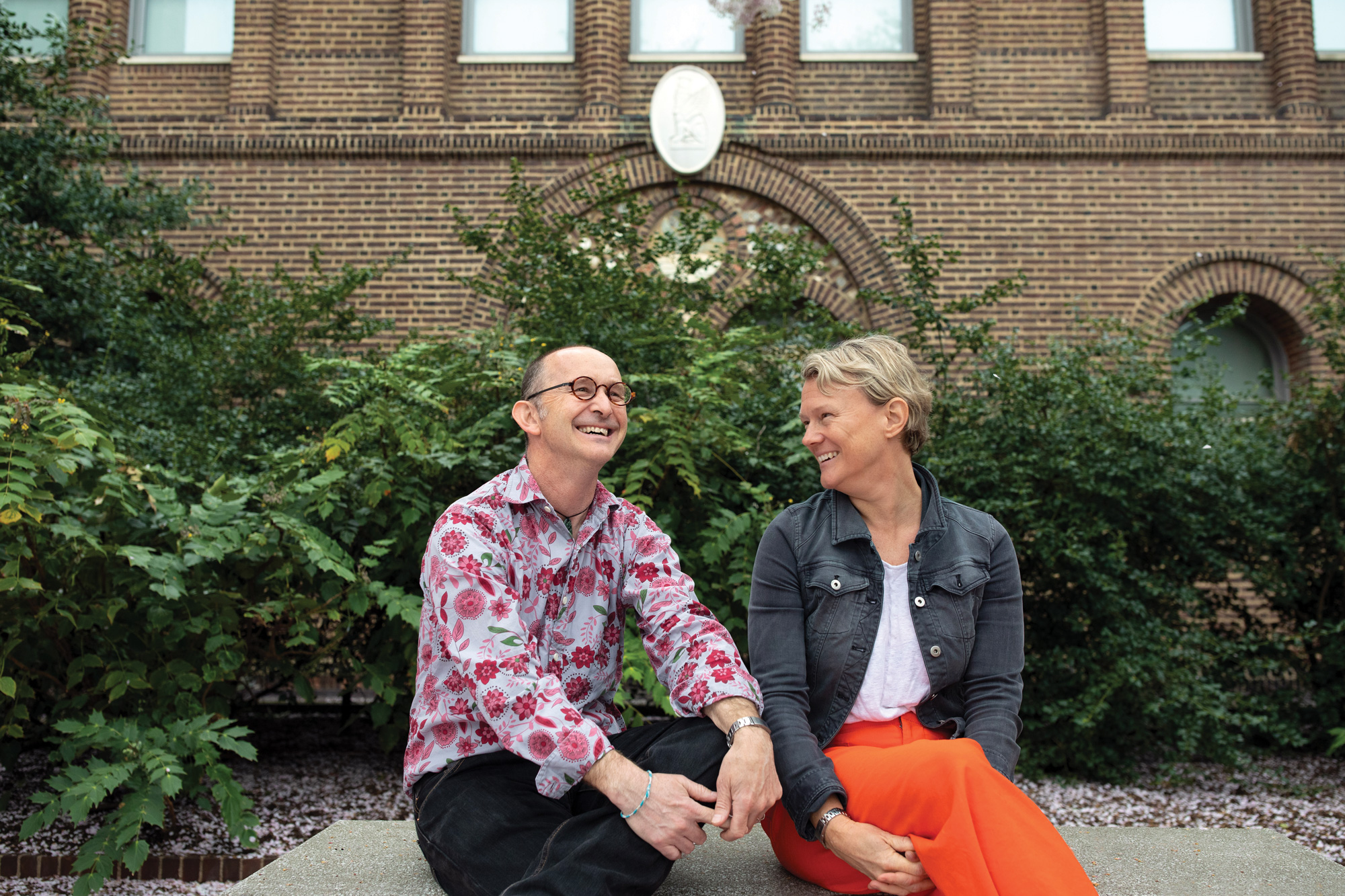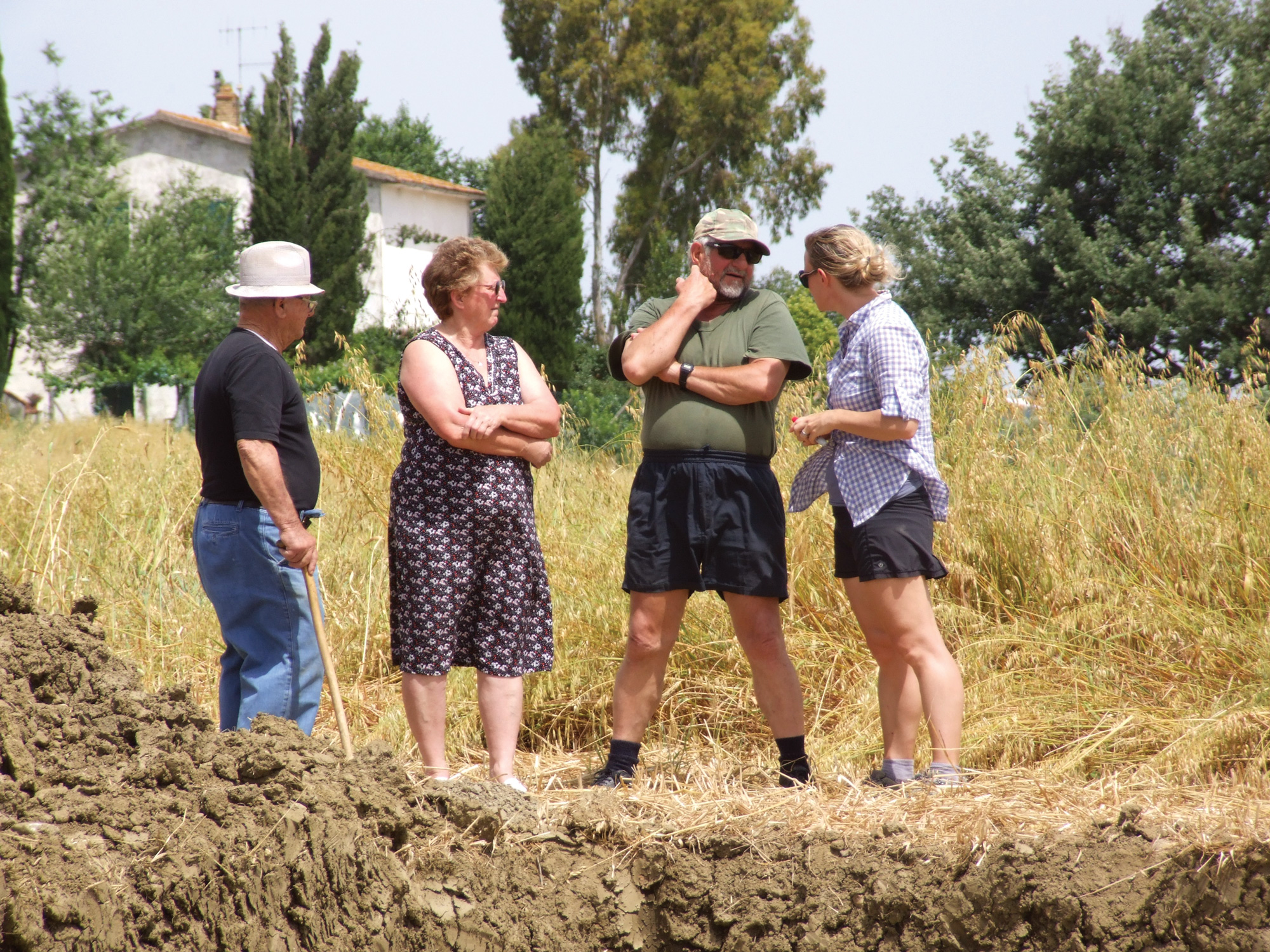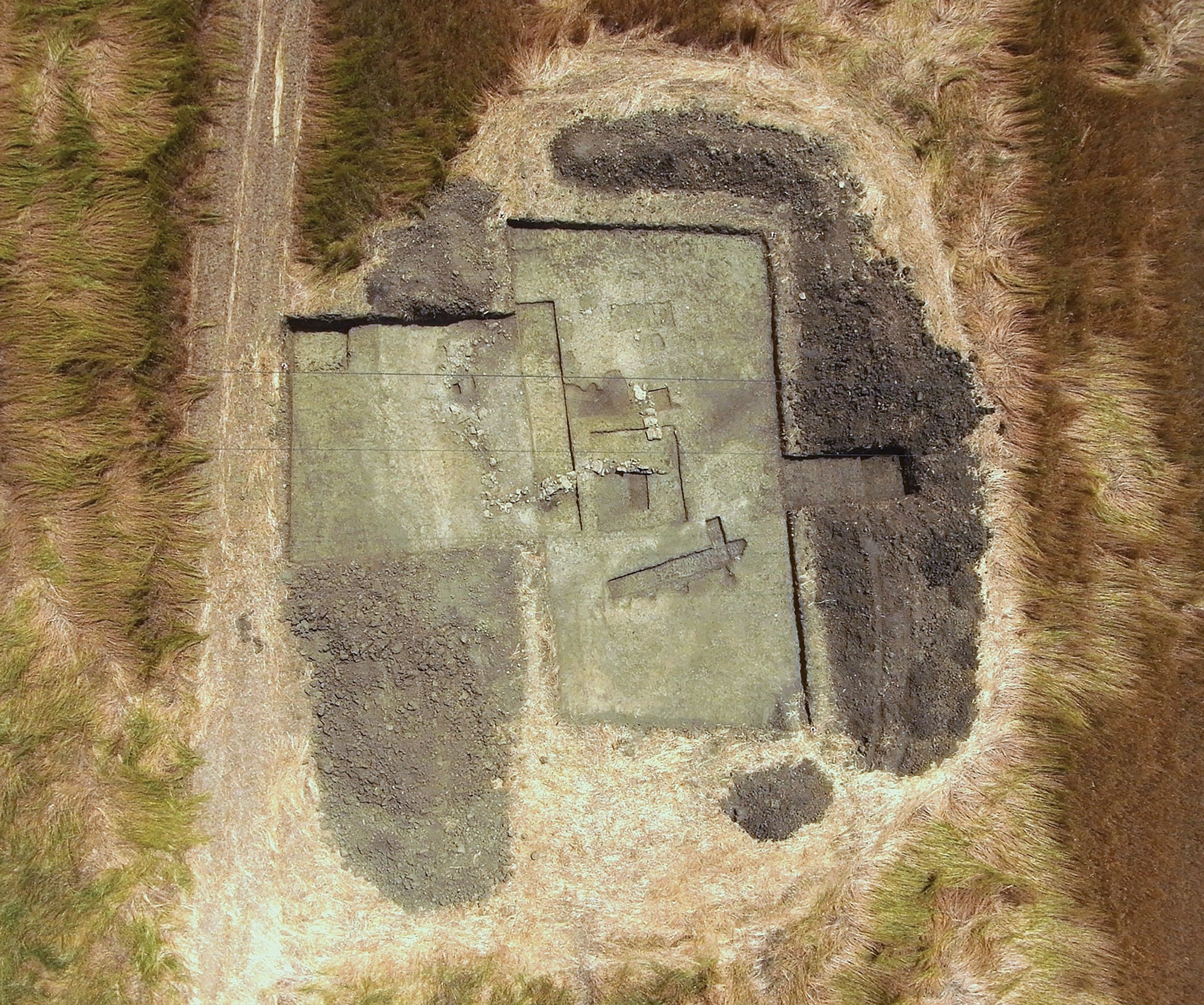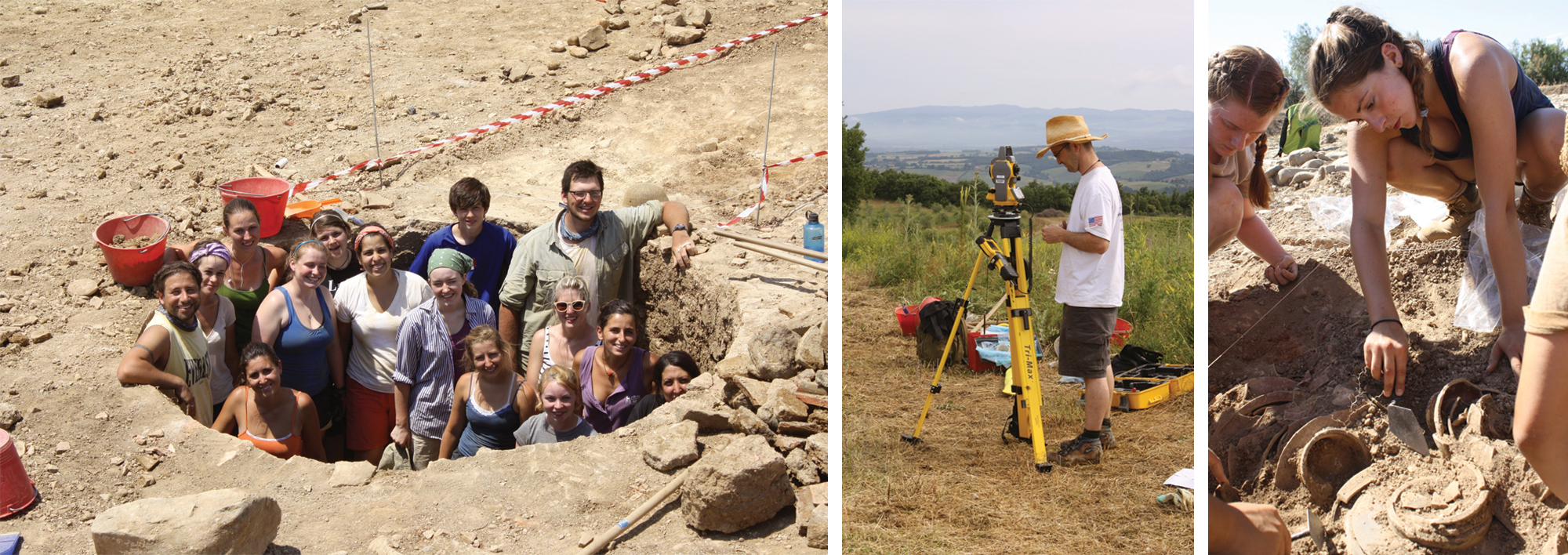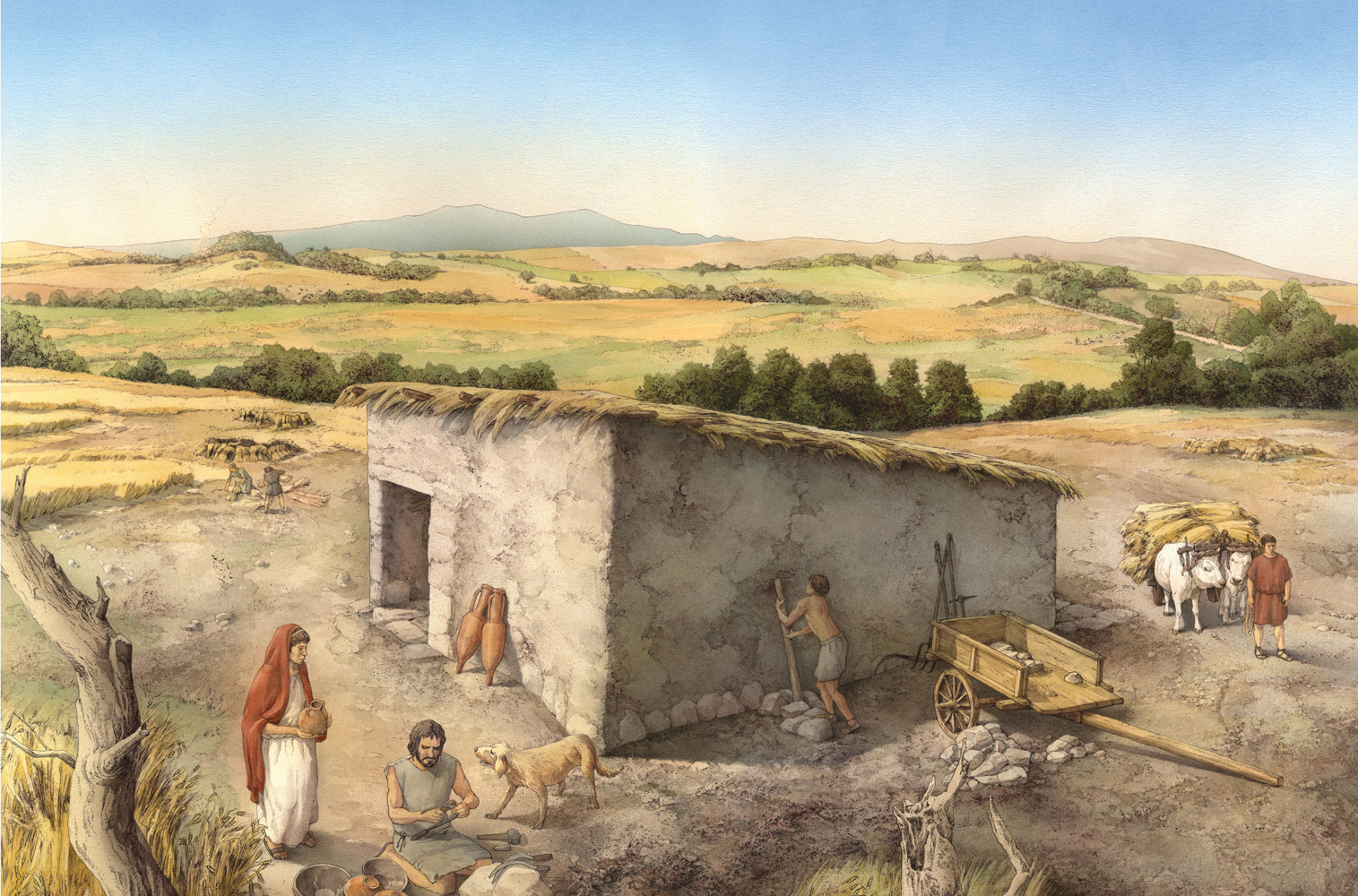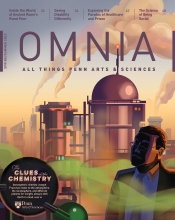The Other 90 Percent
Classical Studies Professors Kimberly Bowes and Campbell Grey reveal the world of Ancient Rome’s rural poor.
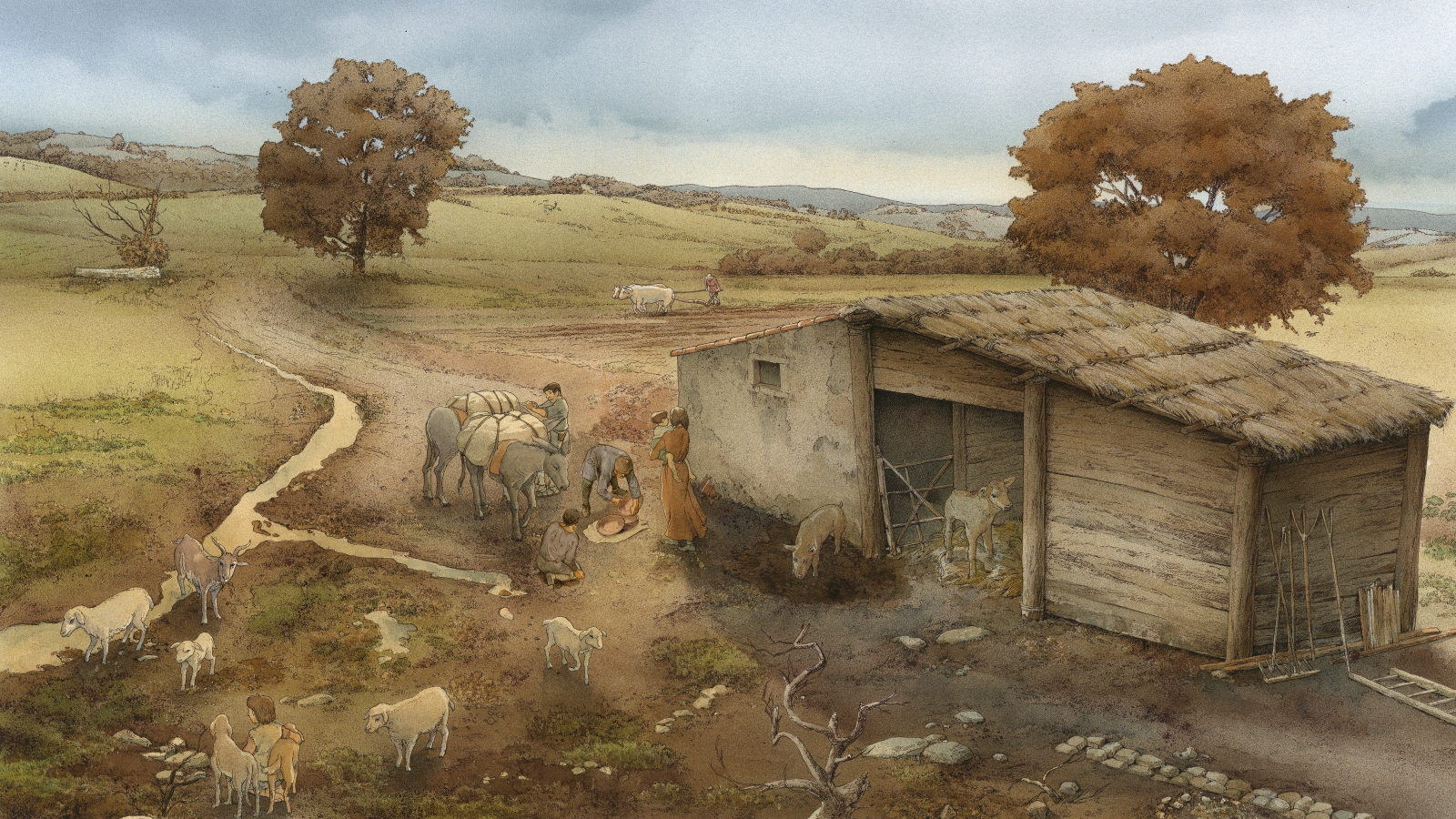
The history of the ancient Roman world, as most people know it, is incomplete. It’s the story of the elites, representing only a small fraction of that vast civilization.
One day in 2007, while researching later Roman elites and aspects of the transition from a largely pagan world to a Christian one, Professor of Classical Studies Kimberly Bowes had a “Paul on the road to Damascus” moment. “A lot of the evidence for that transition is written by and about rich people,” she says, “and I don’t know how many times I found myself adding a footnote that read, ‘Obviously this only pertains to a small percent of the population.’”
As an archaeologist, Bowes realized she had the power to paint a more complete picture—that she could “go out and find the other 90 percent” if she wanted to.
She embarked on a six-year field study in southern Tuscany, which revealed that the rural poor in that region were active participants in shaping the Roman economy during its transition from the Republic to the rise of the Roman Empire—from roughly the first century B.C.E. through the first century C.E. Bowes’s two-volume fieldwork report, The Roman Peasant Project 2009–2015: Excavating the Roman Rural Poor, was published by Penn Press in 2021. It won the 2023 Anna Marguerite McCann Award for Fieldwork Reports from the Archaeological Institute of America.
Tracking the Rural Poor
Uncovering material evidence of everyday ancient Romans presented big challenges. “No one had ever gone out and tried to systematically study poor people in the rural landscape before,” Bowes says. “We mostly know about them from what’s called field survey, which is when archaeologists walk along plowed fields and pick up and map ceramics found on the surface, assuming they relate in some way to buried remains beneath the ground. The smallest and poorest of those ‘surface scatters,’ as they’re called, were assumed to be where rural peasants lived, but no one had ever bothered to go and actually dig up a bunch of those to see if that was true.”
Bowes, who served as director of the American Academy in Rome from 2014 to 2017, says there also had been a question of whether this type of exploration would uncover anything, because it was assumed that poor people “have no stuff.” She and two Italian colleagues formed what they called the Roman Peasant Project, soon to include her fellow Professor of Classical Studies Campbell Grey, who joined the research team as co-director.
Bowes and Grey first met as graduate students. Grey, who studies the social history of non-elites and had a longstanding interest in the lifeways of peasants, was eager to sign on to help tell their story. “If you’re only talking about a tiny slice of the population of the ancient world,” he says, “that doesn’t seem like an authentic study of a society.”
What actually happened was that all of the assumptions turned out pretty much to be wrong. For me, this was the most exciting thing about the whole project.
As the research team—which also included Penn undergraduate and graduate students—began to excavate, they found remains of small stone structures, initially assumed to be houses. “We thought that we should dig the smallest, poorest things we could find,” Bowes says. “Well, they turned out to be pigsties and sheds and drains, not people’s houses—which we later learned were far bigger and richer from an archaeological perspective than we had imagined.”
Bowes and her team discovered that these rural people used small utilitarian structures in different locations for various tasks and activities—little satellite spaces that they traveled between. These are some of the structures that the team “accidentally” excavated when looking for houses.
“What actually happened was that all of the assumptions that we had turned out pretty much to be wrong,” Grey says. “For me, this was the most exciting thing about the whole project. We embraced and celebrated the mistakes and figured out how to improve on those mistakes.”
The advantage of this mobile lifestyle was that it enabled Roman peasants of the period to make maximum and efficient use of the highly variable Mediterranean landscape.
“Tuscany has the same micro regionality as many other parts of the Mediterranean,” says Bowes. “If you’re a farmer and want to exploit that, it’s absolutely mandatory that you have a piece of land here and a piece of land there so you can use those different types of soil and hydrology and topography, so that you can grow different things at different times of the year.” She adds, “Historically, there have been many moments and economies where it has been to people’s great advantage to move around, not necessarily to the point of being nomadic, but nonetheless moving around to their advantage.”
Challenges and Discoveries
To grow different crops in different places, peasants took advantage of local resources. They pooled labor to build infrastructure such as olive presses, which were only used for a few months of the year. In one instance, the researchers excavated a combination olive and grape press. They determined that the press was shared by studying pollen and comparing plants they knew had been grown near the site with the remains of crops brought to the site.
Pollen settles into the soil, becoming part of the archaeological record, and Bowes says it’s only relatively recently that archaeologists have been able to extract and study it under a microscope. Botanists have developed a kind of field guide to pollen that helps identify the plant species that produced it. “If you pull out pollen from excavated archaeological strata, and you can date that stratum to 30 years, you can date your pollen to 30 years—and by archaeological standards 30 years is amazingly good,” says Bowes.
Archaeology is one of the most interdisciplinary of the humanistic sciences, and the varied perspectives of scholars from different backgrounds can create a more complete picture of a research topic, but it can also be challenging to communicate across disciplines. For example, Grey played a key role in determining how rural people physically moved across the landscape, but first he had to learn how to communicate with a geo-archaeologist on the team named Antonia Arnoldus.
“We drove around in her little Fiat Panda all over the Tuscan countryside, trying to figure out how to talk to one another,” says Grey. “It was clear that there were a lot of important conversations to have, but we didn’t have a common vocabulary.” Arnoldus was using “land unit mapping,” evaluating the land by a set of criteria that determined whether it was arable, suitable for pasture, what the slope and elevation was, and other physical characteristics.
“And I’d be like, ‘Well, what are people doing here?’” Grey says. “‘How are they making their decisions about how to farm this, and what if the rich guy over there is not allowing them to do this because he owns the land?’ She would look at me as if I had two heads, but the problem was that I couldn’t understand what she was trying to say either. I was in agency and people, and she was in landscape and place.”
Inspired in part by this experience, and with a growing interest in environmental history and disaster studies, Grey decided to enroll in Penn’s Master of Environmental Studies program, where he spent three semesters learning how to talk to geologists, environmental geochemists, and paleo-climatologists.
In addition to the challenge of communicating across disciplines, there were technological limitations. A commonly used computer mapping program, GIS (geographical information systems), revealed its shortcomings when the team generated a map to show how people could travel to and from a certain central location. “The problem was that it looks great on the map, and then you go to the landscape and you see a vertical slope,” says Grey. “There’s no way that anybody is ever going to walk up that slope, because the effort cost is too high.”
The computer program was telling the team something different, that there were regions only imperfectly connected to one another, he says, and that realization pushed the team to think further and ask new questions.
Several of the sites showed evidence of attempts to manage water and prevent flooding. Says Grey, “I think that asking questions about how marginalized populations went about living their lives, asking questions about how people might effectively or not effectively engage with the world around them, about how people respond to seasonal climatic and environmental changes, perturbations, and disasters, are also urgent questions in our contemporary world.”
There were also happy surprises. One unwritten law of archaeology, according to Bowes, is that often the best finds come on the final day of a dig. This happened as the team sought the remains of a particular peasant village. “We’d been digging there for a month,” says Bowes, “and on the last day, we found this extraordinary stash of beautiful terra sigillata plates (a type of ancient Roman red pottery with a glossy surface) all stacked one on top of the other where they had fallen, when apparently the kiln that they had just come out of had burned down.”
The presence of pottery kilns is another sign of shared labor and points to the fact that rural people produced and sold goods and did not rely solely on farming for their survival.
‘A Hustle Economy’
Bowes’s current project expands on this point, both geographically and chronologically. She is looking at farmers and urban dwellers in Britain, France, and Egypt from the end of the Roman Republic to about the third century C.E.
“I’m trying to extend those questions to urban working people and people outside of Italy,” she says. “I’m writing an economic history of the non-elites that takes on aspects of working people’s experiences, from wages to agriculture to credit and savings to consumption—all the boxes that economic historians like to tick, and using all the extraordinary evidence that exists now to tell new stories about these people’s economic lives. It’s a recognition of what I call a hustle economy. These are people who are not situated in one set of roles. They are consuming a lot and have multiple income streams, which they’re juggling all at the same time in remarkably sophisticated ways, but at extremely small scale.”
One source of data for Bowes’s work is Egyptian papyri, where she found records of payments to agricultural workers, credit accounts, and spending. By studying these records “sideways,” she could see that working for a wealthy landlord, for example, might be only one piece of a bigger income portfolio for a peasant. And she has been struck by parallels in today’s gig economy.
“It’s unbelievable the similarities of people who piece together an economic livelihood from multiple roles instead of simply doing one thing in a world which is highly monetized,” she says. “It doesn’t mean that they’re any less at risk of falling into serious poverty, but they push back against that risk by doing more things, just like the gig worker does today.”
Telling New Stories
The findings that the Roman Peasant Project produced, through eight excavations, represent a volatile period in Roman history and paint a new picture of the rural poor and their place in that history.
“This ought to explode for us the idea that peasants didn’t play a role in that critical moment in Roman history in which we see the rise of cities, the increase in long-distance trade, the growing use of money, the development of markets,” Bowes says. “Because we were able to date these sites pretty tightly, we can see their role in the expansion of Roman rule—all the big things going on in their environment. In fact, there are more peasants doing these things than there are the rich guys who we assumed had been the protagonists of all these developments. It means we have to write peasants back into our histories as agents in these processes.”
This research also shows the ways in which Roman peasants impacted the landscape. “From my perspective, it’s pretty clear that they’re taking maximum advantage of their landscape and constantly shaping and manipulating that environment to their own ends,” Bowes says. “This is completely the opposite of the idea of peasants that we have inherited through at least 50 to 100 years of archaeological work, in which we assumed they’re static. They aren’t risk takers. They just sit there and take whatever the weather gives them.”
The inequalities and growing poverty in our own world have made us wake up and realize that we have left the 90 percent out of most of our histories.
Bowes notes that the manipulation and micromanagement of the Tuscan landscape only started to happen as cities began to grow, providing a market for what the rural people produced. The people she studied represent an increasing experience of a larger world. “Our peasants are sometimes drinking wine from Palestine in our later period, despite the fact that they are growing their own wine,” she says. “They’re buying fish sauce from Spain. These are people who are actively engaged in the same big and small networks that are particular to this moment in Roman history.”
Grey’s next project is a book about managing uncertainty, and he says people in antiquity learned to live with the unpredictability of nature by acknowledging that they couldn’t control the world around them. “You come up with pragmatic, economic, cultural, social, intellectual strategies for managing risk and uncertainty,” he says. “And I think that those strategies are, in many ways, more effective than ours, in our modern world, pretending that we can harness the world to our wills and desires.”
Bowes and Grey see a growing interest among archaeologists, classicists, and historians in studying poorer people. It can be a hard sell, Grey notes—the difference between finding “a bunch of really interesting dirt versus, ‘Look at this amazing urban temple.’” But they are hopeful that the collective scholarly discourse is moving in their direction.
“The inequalities and growing poverty in our own world have made us wake up and realize that we have left the 90 percent out of most of our histories,” says Bowes. “That’s particularly true for the ancient world, I think in part, because it’s extremely difficult to recover these people. But more and more graduate students are coming to us wanting to work on enslaved people, peasants, the poor, people who haven’t been written into our histories as much as they should have been. I will say that classical studies, and particularly this department, have long tried to write women back into ancient history. And now I think we’re broadening the pool of the people we realize have been left out, and that is shifting, and it’s good news.”
